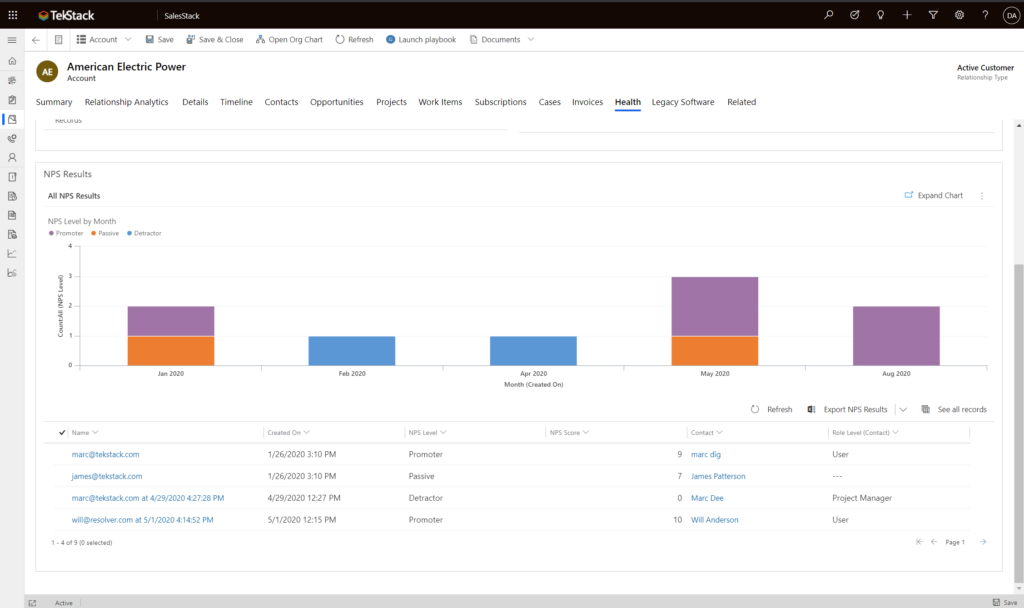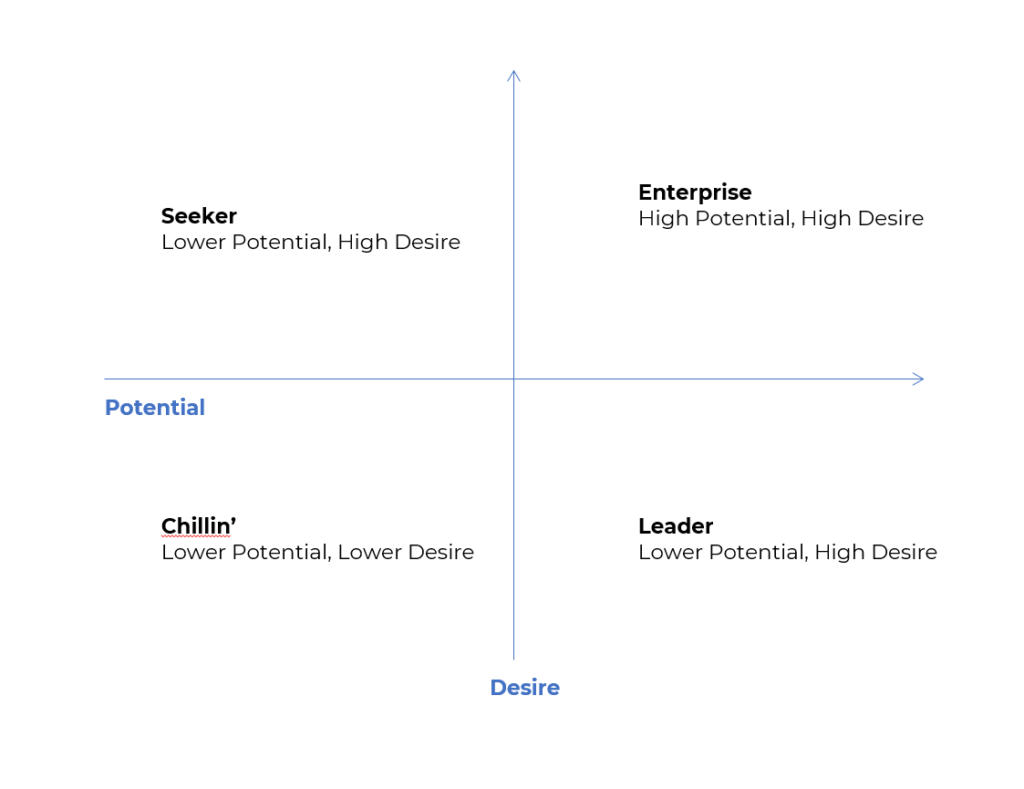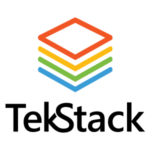
Improving Customer Success is important for B2B companies but more so if you are in the SaaS industry, the main reason being Annual Recurring Revenue, or ARR. The main goal for a SaaS company is to grow its ARR as fast as possible as this is the main form of valuation for the company. Every $1 you increase in ARR has a net impact on a company valuation of anywhere from $5 to $30.
This brings us back to Customer Success. Why is it so important? It’s simple, how will you grow or add new ARR if your customers keep leaving you?
Here are eight ways you can improve customer success
1) Capture a Customer Sentiment score
Customer sentiment uses a survey as a feedback loop from customers. The two most common survey types are customer satisfaction (CSAT), or Customer Net Promoter Score (NPS). The simplest and most elegant is NPS. The trick with NPS is to capture sentiment at the right time in the customer’s journey (ex. at go-live, or three months before renewal), and to aggregate your company’s overall NPS over a larger time horizon (ie. not just from the last survey results).

See results over time, weighting the score based on a longer time horizon
2) Classify customers into segments
It’s hard for a company that has hundreds of customers and a small customer success team to drive success for each customer equally. And frankly, not every customer wants that attention. You need to pick your battles. This is where customer segmentation comes into play. The idea is to spend 80% of your time on 20% of your customers. For the remaining 80% of your customers, rely on automated playbooks and nurture campaigns.
There are several strategies for segmentation. But ideally, you can map your customers into one of four boxes based on two variables. Align ARR to segment to see the ‘long tail’ of ARR.

Segment your customers across two axes. Here we use Desire and Potential.
Once customers are segmented, you can analyze your recurring revenue by segment to see the impact of the ‘long tail’. That is, how much of your recurring revenue is in the lower-left segment. This will drive a lot of decisions around how you construct the customer success function in your company.
3) improve Customer Success by creating Playbooks
There are several key playbooks you will want to define. Ideally, these definitions become automated in your CRM system. Think about the following playbooks. This guide might give you ideas as well.
Renewals
The old strategy of sending a renewal invoice three months early is no strategy at all. Renewal playbooks allow you to get ahead of the conversation.
Customer-at-Risk
Several triggers mark a customer at risk. Whatever the event that marks a customer at risk is, make sure the organization has a clear and agreed play on escalating response and corrective action.
Customer Onboarding
The early communication right after the customer signs an agreement can stave off the natural emotion of remorse or regret, common in everyone after making a big decision.
4) Automate your Marketing Outreach
Marketing automation is one of the most beneficial tools nowadays. Not only will automation save you time and money, but it will also help you manage your marketing outreach.
An integrated marketing automation capability will automatically add new customer contacts to automated email campaigns that are oriented to existing customers. This audience could be segmented even further by role, or area of interest.
5) Improve Customer Success by Tracking Relationship Strength
Has anyone on your team talked to Customer x in the last month? How many key relationships have you identified at Customer Y? Tracking relationship strength and depth is very important when it comes to Customer Success. Let’s say you have hundreds of customers, how deep is your relationship with each customer? Do you know the executive sponsors? And more importantly, when was the last time you spoke with them?
This drives relationship strength and relationship depth. This index can be looked at by the Customer Success Manager to find out where there are relationship issues and helps them plan for the next move.
6) Provide your team with the information they need about their customers.
One thing that most companies struggle with is the lack of access to information about the customer throughout the team. The data needed to perform the customer success role is spread across multiple systems.
This mix of systems can lead to a lack of traceability and transparency of data. This also ends up being time-consuming inputting data into several different platforms and there is a huge risk of mismanaging the data.
At the very least in the organization should have access to key information about the customer including:
- Current ARR
- Go-Live Date
- Customer Since Date
- NPS Score
- Gross Margin
- Status of Cases
- Status of invoices
- What products do they use?
- What did they pay for them (so you can quote upsells)?
- When is the renewal date(s)?
TekStack’s approach to this is to have one system of record. One data source for all information across the lifecycle makes it infinitely easier for CSMs to draw the needed information.
7) Create a customer health temperature
Customer health can be represented as an indexed score, or simply as a temperature. Our recommendation is to use a simple temperature read (ex. Red, Yellow, Green). In reality, is your response to a customer score going to change if a score goes from 83 to 79? Probably not. However, a move from Green to Yellow should prompt a notification. From Yellow to Red should instigate a Customer-at-Risk Playbook.
What should constitute this scoring algorithm?
Customer Sentiment – We like Net Promoter Score for this.
Telemetry – Are they still using the product? Did new users get added?
Invoice balance – Have their invoices been left unpaid?
Customer Relationship Index – Have we identified key contacts, have they engaged in the last 30 days?
Severity One Issues missed SLA – Has your support team not met an SLA for a Severity One issue?
You might have other data points you want to consider. The key is getting this information into a common data store so that you can kick off playbooks or notifications.
8) Track Your Metrics to Improve Customer Success
There are two important metrics when it comes to Customer Success. Net Churn & Retention.
Churn & Retention metrics are designed to identify the health of the existing customers. Churn and Retention can be looked at in several ways, here are three:
Retention – Reflected as a percentage of customer count or customer revenue that is retained from one year to the next.
Gross Churn – Reflected in terms of revenue, this is the amount of lost revenue (either attrition or down-sell) over the starting recurring revenue for the period.
Net Churn – Same as Gross Churn except that it includes any expansion revenue that offsets the lost revenue.
Churn is one of those SaaS metrics that can be left open to interpretation. Because it’s communicated in relative terms, it’s hard to see the impact that scale has over time. One of the ways that Churn is interpreted is by collecting the new logo ARR into the calculation. Don’t use this approach. All you are doing is masking the impact existing customers have on the business.
Apart from that, these are the other metrics you should be tracking:
- Relationship Strength Index
- Relationship Depth Index
- Customer Health
- Customer Gross Margin
- ARR by Customer Segment
- ARR by Product
Ideally, you can get at this information from a reporting system that doesn’t require constant gymnastics.
Conclusion
In conclusion, Your software company’s success is dependent on your customer’s success. However, most companies are under-invested in programs and tools to get there. TekStack Is here to help you understand where your customer is in their journey.








